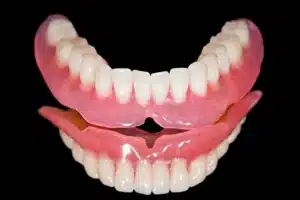A dental bridge is a common dental restoration used for replacing lost teeth, whether the loss was due to trauma, structural damage, infection or decay. The dental bridge is as the name implies; a bridge over the gap created by a missing tooth. The teeth on the sides of the gap function as anchors and support the false tooth in the middle.
Uses of dental bridge
To know if a patient can get a dental bridge, the dentist will perform an exam of the oral cavity. Based on the position of the lost tooth, a dental bridge may be appropriate or not. the anchor teeth will also need to be checked to ensure they are sturdy enough to support the prosthetic tooth. The dentist may request additional x-rays or CT scan to ascertain the condition of dental structures.
If the dentist determines that the patient is eligible for a dental bridge, they will select the best type of dental bridge to use. four types of bridges are common and have different options, depending on the patient’s condition. The types of dental bridges include:
Traditional dental bridge
This is the most common dental bridge available. This type of bridge consists of a dental crown that latches onto the teeth on its sides and a false tooth in between. Therefore, the dental crowns serve as anchor points and the false tooth (called pontic) bridges the gap. The main plus of traditional bridges is their strength. The drawback is that the process requires modifying the two adjacent teeth.
Cantilever bridge
Cantilever dental bridges are structurally different from the traditional variants in that they only need a single anchor tooth. they are not as popular as the other types of bridges and are usually only used for missing teeth in the front row. Cantilever bridges are not recommended for back teeth because the stress of chewing will be too much for a single tooth to handle. Successfully placing this bridge can save both time and money, but the use case is limited.
Maryland bonded bridge
A Maryland bridge is structurally similar to the traditional bridge, but rather than use dental crowns as anchors, it uses a metal or porcelain framework. The framework removes the need to modify adjacent teeth and is simply affixed to the back instead. Basically, Maryland bonded bridges are a conservative and more affordable alternative to traditional bridges. However, the strength depends on the bonding agent and the metal framework can discolor the tooth.
Implant-supported bridge
These bridges have the same form as traditional bridges, but they are held in position with dental implants. Due to this, implant-supported bridges do not need adjacent teeth and can be used when more than a tooth is missing consecutively. Dental implants are popular for their durability and strength and can restore complete dental functions. The drawback of this option is the duration of treatment, which can span several months.
In conclusion
The four types of dental bridges are effective for patients who have lost their teeth. Each of them has its pros and cons, so a general dentist is the best professional to consult with in order to determine which would work best.
Request an appointment here: https://normandaledental.net or call Normandale Dental at (952) 888-9661 for an appointment in our Bloomington office.
Check out what others are saying about our dental services on Yelp: Dental Bridges in Bloomington, MN.





